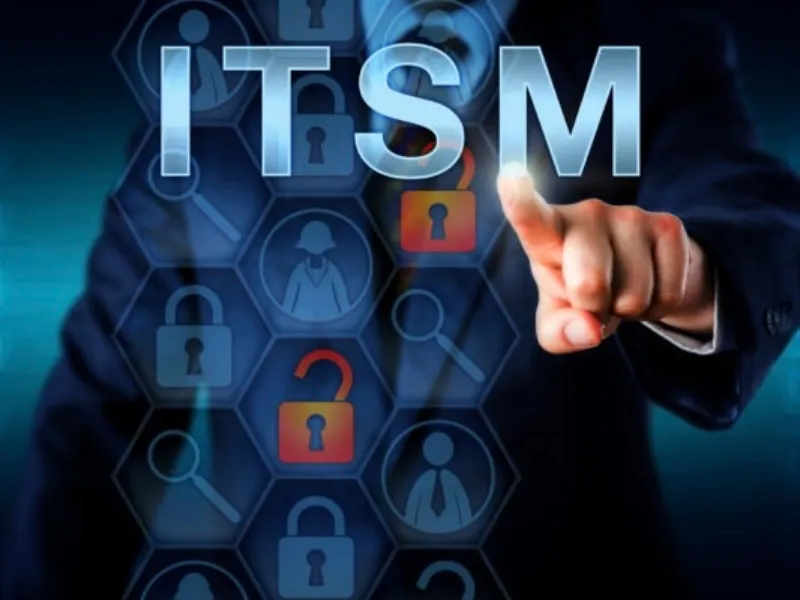- ITSM is not about IT systems themselves but rather the way IT services are managed to meet business goals.
- Whether in finance, healthcare, telecommunications, or technology, ITSM provides a structured framework for managing and improving IT services, making it a cornerstone of modern IT management.
Information Technology Service Management (ITSM) is a strategic approach to designing, delivering, managing, and improving the way IT is used within an organisation. It ensures that IT services align with the needs of the business, delivering value to customers and improving efficiency. ITSM is not about IT systems themselves but rather the way IT services are managed to meet business goals.
Understanding ITSM
ITSM encompasses a set of policies, processes, and procedures to manage the end-to-end delivery of IT services. It focuses on customer needs and IT services for customers rather than on IT systems. This approach helps organisations ensure that the right mix of people, processes, and technology are in place to deliver value.
Also read: AI boom propels TSMC to trillion-dollar club, now 8th globally in market value
Also read: What are colocation services?
Core components of ITSM
1. Service strategy: Defines the approach to IT service management and the alignment of IT services with business objectives.
2. Service design: Plans and designs the IT services, including processes and policies, to meet business requirements.
3. Service transition: Manages the transition of new or changed services into the operational environment, ensuring minimal disruption.
4. Service operation: Oversees the day-to-day operation of IT services, ensuring their efficient and reliable delivery.
5. Continual service improvement: Continuously evaluates and improves IT services and processes to meet changing business needs.
Key practices in ITSM
1. Incident management
Incident management involves restoring normal service operations as quickly as possible following an interruption. The primary goal is to minimise the impact on business operations.
When a server outage occurs at a financial institution like Wells Fargo, the incident management team swiftly identifies the issue, communicates with stakeholders, and implements a solution to restore services, ensuring minimal downtime and customer impact.
Quick incident resolution maintains business continuity and minimises disruptions, which is critical for customer satisfaction and operational efficiency.
2. Problem management
Problem management focuses on identifying and managing the root causes of incidents. It aims to prevent future incidents by addressing the underlying issues.
A telecom company like AT&T might experience recurring network outages. Through problem management, AT&T identifies that aging infrastructure is the root cause. They then plan and execute an infrastructure upgrade to prevent future outages.
Addressing root causes reduces the frequency and impact of incidents, improving service reliability and customer trust.
3. Change management
Change management ensures that standardised methods and procedures are used for efficient and prompt handling of changes to IT services. This minimises the risk of negative impact on services.
When a new software update is scheduled for deployment at a healthcare provider like Mayo Clinic, the change management process ensures that the update is thoroughly tested and stakeholders are informed. This reduces the risk of service disruption during the update.
Controlled changes prevent disruptions and ensure that modifications to services are carried out smoothly and effectively.
4. Service level management
Service level management involves negotiating, defining, and managing the levels of service required and ensuring that these levels are achieved.
A cloud service provider like AWS establishes service level agreements (SLAs) with its customers, guaranteeing specific uptime percentages and response times. Service level management ensures AWS meets these commitments, maintaining customer satisfaction and trust.
Clear SLAs set expectations and ensure that service delivery aligns with customer needs and business goals.
5. Configuration management
Configuration management maintains information about the configuration of services and infrastructure, ensuring that data is accurate and available when needed.
In a large organisation like Microsoft, configuration management databases (CMDBs) track the relationships between various IT assets and configurations, providing a clear overview of the IT environment. This facilitates efficient troubleshooting and planning.
Accurate configuration data supports effective incident resolution, change management, and planning, enhancing overall service quality.
Conclusion
IT Service Management (ITSM) is essential for aligning IT services with business needs, ensuring efficient and reliable service delivery, and driving continual improvement. By implementing ITSM practices such as incident management, problem management, change management, service level management, and configuration management, organisations can achieve higher efficiency, improved customer satisfaction, and sustained business success.
Whether in finance, healthcare, telecommunications, or technology, ITSM provides a structured framework for managing and improving IT services, making it a cornerstone of modern IT management.

